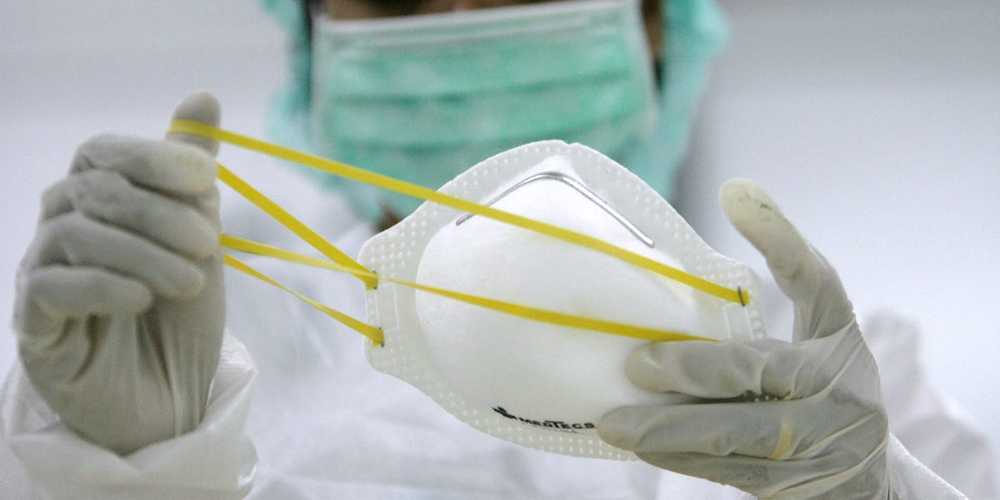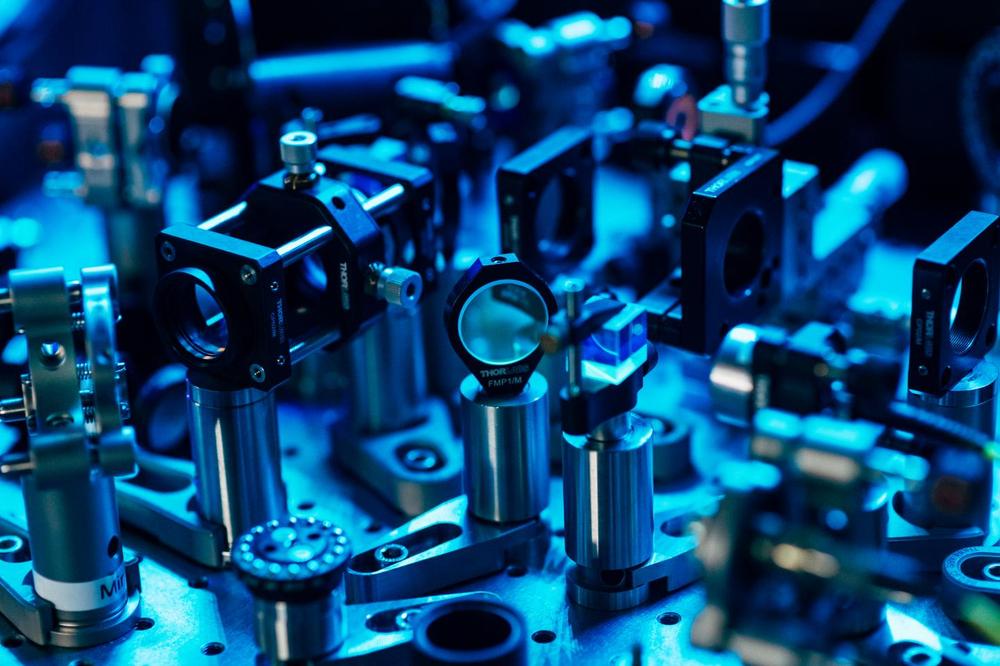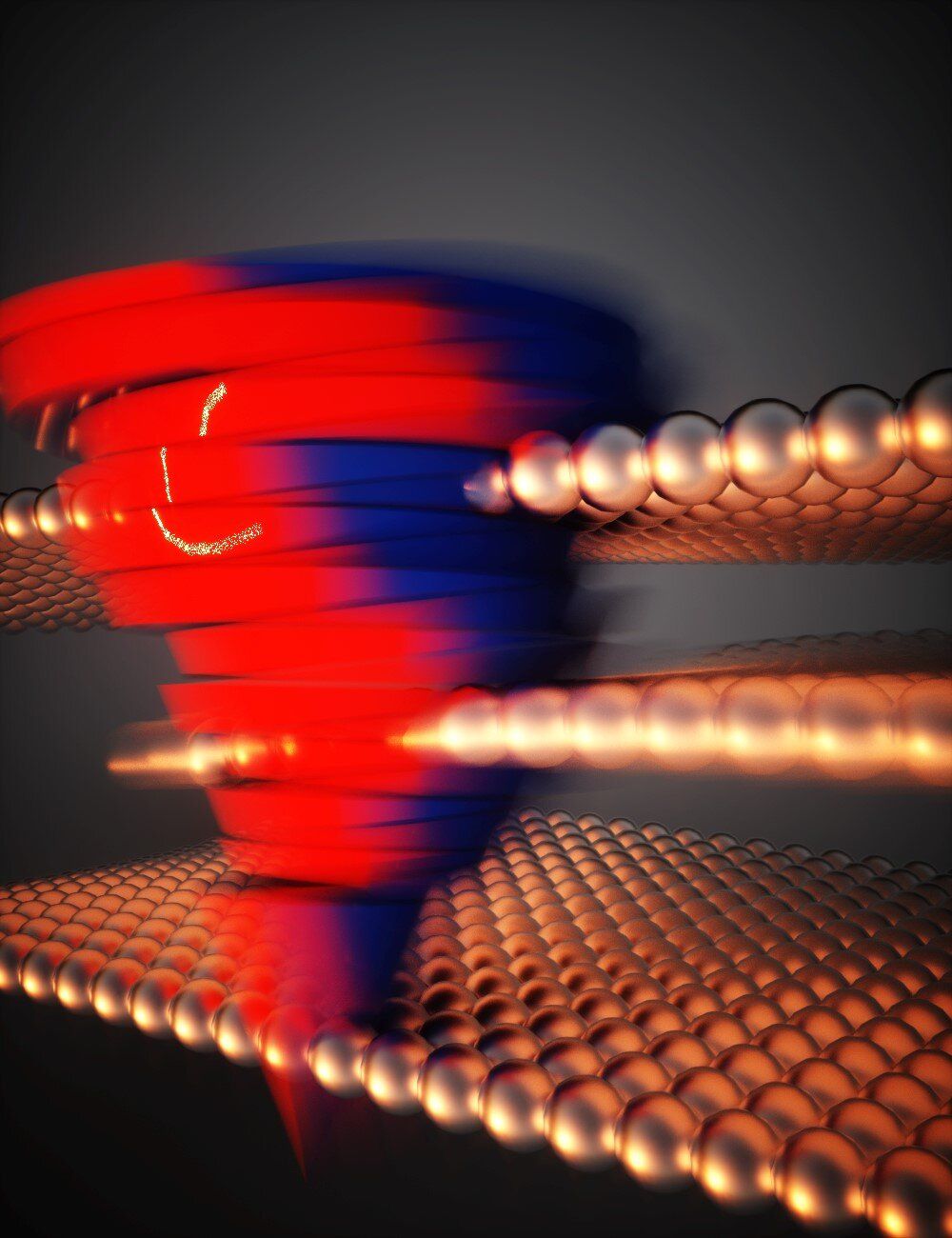The masks could screen for the coronavirus at airports, hospitals, and offices. They could also double as a diagnostic test.
Sensors produce a fluorescent light when an infected person breathes, coughs, or sneezes into the mask.


WOW! A reduction in air pollution means residents in Nepal can see Mount Everest from over 120 miles away for the first time in decades. https://bit.ly/3bPjlNt
An incredible photo shows Mount Everest visible for the first time in decades from the Nepalese city of Kathmandu.
A coronavirus lockdown-related reduction in air pollution has made the famous visible from the city 124 miles away, according to the Nepali Times. The photo was taken by Abhushan Gautam from the Kathmandu Valley on May 10.
Some 427 coronavirus cases have been diagnosed in Nepal, and COVID-19 has accounted for two deaths in the country, according to data from Johns Hopkins University.

A pioneer in Emotion AI, Rana el Kaliouby, Ph.D., is on a mission to humanize technology before it dehumanizes us.
At LiveWorx 2020, Rana joined us to share insights from years of research and collaboration with MIT’s Advanced Vehicle Technology group.
Part demo and part presentation, Rana breaks down the facial patterns that cameras can pick up from a tired or rested driver, and observations from the first ever large-scale study looking at driver behavior over time.
Learn how these inferences can be used to change the driving experience ➡️ https://archive.liveworx.com/sessions/artificial-emotional-i…it-matters
Today’s devices work hand-in-hand with humans –at work, home, school and play. Dr. Rana el Kaliouby believes they can do much more. An expert in artificial emotional intelligence, or “Emotion AI,” Dr. el Kaliouby explores the valuable applications of humanized technology in media and advertising, gaming, automotive, robotics, health, education and more. She explains how machine learning works, explores the potential for the development of emotion chips, and addresses the ethics and privacy issues of Emotion AI. In her talks, Dr. el Kaliouby gives participants an inside look at the world’s largest emotion data repositoryresults from her research studying more than 5 million faces around the world, and reveals that the emoji mindset may soon be a thing of the past.
Check out Megaprojects: https://www.youtube.com/channel/UC0woBco6Dgcxt0h8SwyyOmw
→Subscribe for new videos every day!
Find more lists at: http://www.toptenz.net
Our other YouTube Channels:
Biographics: https://www.youtube.com/channel/UClnDI2sdehVm1zm_LmUHsjQ/
Geographics: https://www.youtube.com/channel/UCHKRfxkMTqiiv4pF99qGKIw/
Business inquiries to [email protected]
Don’t Be So Close!!!? 😱

Cross-posted from U.S. Food and Drug Administration
[On July 2, 2020], the U.S. Food and Drug Administration approved Rukobia (fostemsavir), a new type of antiretroviral medication for adults living with HIV who have tried multiple HIV medications and whose HIV infection cannot be successfully treated with other therapies because of resistance, intolerance or safety considerations.
“This approval marks a new class of antiretroviral medications that may benefit patients who have run out of HIV treatment options,” said Jeff Murray, M.D., deputy director of the Division of Antivirals in the FDA’s Center for Drug Evaluation and Research. “The availability of new classes of antiretroviral drugs is critical for heavily treatment-experienced patients living with multidrug resistant HIV infection—helping people living with hard-to-treat HIV who are at greater risk for HIV-related complications, to potentially live longer, healthier lives.”



The emergence of artificial intelligence and machine learning techniques is changing the world dramatically with novel applications such as internet of things, autonomous vehicles, real-time imaging processing and big data analytics in healthcare. In 2020, the global data volume is estimated to reach 44 Zettabytes, and it will continue to grow beyond the current capacity of computing and storage devices. At the same time, the related electricity consumption will increase 15 times by 2030, swallowing 8% of the global energy demand. Therefore, reducing energy consumption and increasing speed of information storage technology is in urgent need.
Berkeley researchers led by HKU President Professor Xiang Zhang when he was in Berkeley, in collaboration with Professor Aaron Lindenberg’s team at Stanford University, invented a new data storage method: They make odd numbered layers slide relative to even-number layers in tungsten ditelluride, which is only 3nm thick. The arrangement of these atomic layers represents 0 and 1 for data storage. These researchers creatively make use of quantum geometry: Berry curvature, to read information out. Therefore, this material platform works ideally for memory, with independent ‘write’ and ‘read’ operation. The energy consumption using this novel data storage method can be over 100 times less than the traditional method.
This work is a conceptual innovation for non-volatile storage types and can potentially bring technological revolution. For the first time, the researchers prove that two-dimensional semi-metals, going beyond traditional silicon material, can be used for information storage and reading. This work was published in the latest issue of the journal Nature Physics. Compared with the existing non-volatile (NVW) memory, this new material platform is expected to increase storage speed by two orders and decrease energy cost by three orders, and it can greatly facilitate the realization of emerging in-memory computing and neural network computing.

Bioengineering.
There is currently no vaccine or cure towards COVID-19. It is predicted the development of a safe and effective vaccine to prevent COVID-19 will take 12 to 18 months, by which time hundreds of thousands to millions of people may have been infected. With a rapidly growing number of cases and deaths around the world, this emerging threat requires a nimble and targeted means of protection.
Could CRISPR be the next virus killer? To address this global pandemic challenge, we are developing a genetic vaccine that can be used rapidly in healthy and patients to greatly reduce the coronavirus spreading. We developed a safe and effective CRISPR system to precisely target, cut and destroy COVID-19 virus and its genome, which stops coronavirus from infecting the human lung.
We’ve shown that the CRISPR system can reduce 90% of coronavirus load in human cells. It can also protect humans against essentially 90% of all current and emerging coronaviruses. The project is ongoing, and we are working around the clock towards getting an actual product by combing our CRISPR method with an inhaler-based delivery device.